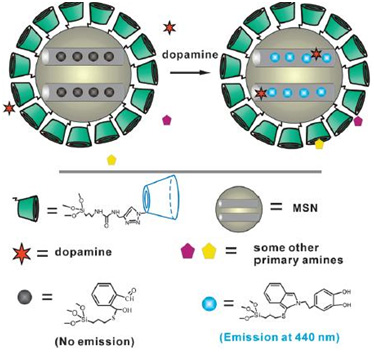A new tool for the selective detection of dopamine in water, with potential applications to urine and serum, has recently been developed by the Chinese research group led by Fang Zeng and Shuizhu Wu.
Repeated tests proved that without the β-CD layer the selectivity is lost and that out of 24 potential interfering molecules, among which common amino acids, epinephrine and others, only two (histidine and norepinephrine) gave responses comparable to dopamine. While the results obtained for norepinephrine can be ascribed to the structural similarities to the target molecule, the reason behind the behaviour of the sensor towards histidine are currently unclear.
Dopamine is an important neurotransmitter involved in behavioural responses, sleep regulation, mood and learning processes among others. A malfunction in the dopamine regulating processes and related disruptions are implicated in the attention deficit disorder, Alzheimer`s disease, schizophrenia and psychosis.
Changmin Yu, Ming Luo, Fang Zeng, Fangyuan Zheng and Shuizhu Wu
Chem. Commun., 2011, Advance Article











